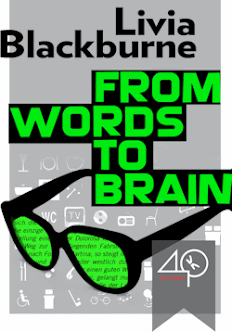Tomes 2010 has of course been retired. Time now for the maiden voyage of Tomes 2011. Without further ado, then:
| Image Source |
This is not the type of book you buy for a casual perusal. It's written by experts for experts. It doesn't make concessions for laypeople. That said, if you've done some extensive reading of the popular literature and cut your teeth on science blogs, you'll understand at least 40% of this book.
It's got everything: from defining what a mountain is to how they evolve, functional and applied mountain geomorphology, and global environmental change. I learned things from this book that changed many of my perspectives on mountains, and the information in it comes trickling back at odd times to inform something else I'm reading. I'll be reading this book again in a year or so, when I'll understand more, and referring to it more than once in the future. If you want to know how mountains work, and aren't afraid of actual science, this is an excellent resource.
| Image Source |
Krakatoa
Never actually wanted to read this one. I know the story of Krakatoa: big boom, no volcano. Seen a program on it, hadn't I? Read up on it in other books about volcanoes, even so. Then I read this bit about the book by Suvrat Kher and decided I'd better read it after all.
It's a rich read: full of history, geography, economics, and all sorts of interesting cultural bits. Only problem is, you know this nice, quiet, pretty island volcano is about to explode spectacularly and kill a great many thousands of people, and it seems to take forever getting there, and then when it does it seems like it should've taken longer. I think Simon didn't linger for ages over every single detail of the eruption because it's been covered elsewhere, but I wouldn't have minded a wee bit more detail. That's not to say there wasn't quite a bit - there was. I'm just being nitpicky.
Aside from my impatience with getting to the big boom, though, it was an excellent read. It's definitely the kind of thing I plan to chuck at people who don't know and don't think they'd like to know geology, but are easily sucked in by big flashy volcanic eruptions and all of the other bits. "Oh," I'll say innocently, "you'd like to read about big explodey things?" Or, "Hey, there's this great book about colonialism/Java/natural disasters/whatever," and then slip them a copy and run away sniggering, because by the end of it they'll have had an education in plate tectonics they won't soon forget.
And really, there's just something utterly remarkable about the thought that an island over 2000 feet high and several miles in diameter could simply vanish over the course of a morning. That the sound of it blowing itself apart could be heard clearly almost 3,000 miles away. We've been lucky, we modern humans, that we haven't witnessed many events so huge in historical memory. Krakatoa is an uncomfortable reminder of the enormity of such things.
In short: if you haven't already, just read the damned book.
| Image Source |
The Alps: Europe's Mountain Heart
I bought this book because it's desperately difficult to find anything affordable on Alpine geology in this country. It's got a whole chapter devoted to the geology of the Alps.
Was rather a bit shocked to discover the authors were deceased. They died before the book came out. This led me to speculations about all sorts of alpine accidents and so forth, but Nicholas, at least, died of a perfectly ordinary tumor at age 81, and Nina (though I can't find an obit for her) seems to have lived to a good age as well. So this book becomes a memorial to lives well lived, and it's clear from all they say about the Alps that they lived very full lives indeed. They loved these mountains. They loved everything about them, and that love comes through very clearly.
You'll learn loads more than geology. There's biology and climate, and there's whole chapters devoted to humans and history. You'll find a new way of looking at the Mona Lisa, you'll come away with a deeper appreciation for all of the folks (including women!) who looked at big pointy bits and said, "Hmm, bet I can climb that," and you'll discover all sorts of things you may not have known before. Such as, Mark Twain didn't much like the Alps. And too many people have intruded too much war into them.
I wanted more geology, so I got a bit impatient with the rest, but I feel my appreciation for the rest growing. It's good to know things about places and people. And while it's not written in the most poetic prose on the planet (whereas the Introduction was), it's clear and simple and at times unexpectedly intimate. A good read, indeed.
| Image Source |
This is perhaps a bit too concise an introduction. The book is all of 38 pages of text if you don't count the introduction. It covers several countries and over a thousand years of architecture, with a rather heavy emphasis on mosques and palaces. And the author has a distressing tendency not to define terms very well. There turns out to be a glossary, but as it's one page sandwiched between the notes and the bibliography, I didn't find it until after I'd finished the book.
Those flaws can be overlooked. But what I have a rather harder time forgiving is the fact that the accompanying images are all squashed in at the back, so when the text refers to this or that figure, you have to go hunting for it. By the time you've found it, you've rather forgotten what the text had to say about it. This may not have been as much of a problem if this wasn't my bathroom book, but it still would have been annoying if I'd been reading straight through. Having to constantly interrupt the flow in order to reference something that could just as easily have been printed on the facing page didn't help me enjoy the experience.
Those flaws in mind, it's not a bad introduction to Islamic architecture. It's just that there's probably better. So unless you, like me, find this on a clearance shelf for a couple of bucks, don't bother.
| Image Source |
As obsessed as I am with Neil Gaiman, you would've thought I'd read this book when it first came out. But alas, I did not. I kept meaning to, but other things always got in the way. But then I read Livia Blackburne's series of posts using The Graveyard Book to illustrate various writing techniques (and remind us all that Neil Gaiman is a genius), and I decided it was time.
I began the book at 2:15am. I put it down a couple of times to smoke and pee. I finished it at 6:45am. And promptly did not fall asleep for most of the rest of the morning.
Let me admit something: I like Neil's non-kids stuff better. But this was a perfectly excellent read. You'll get a great sense of it from reading Livia's posts, and I haven't much to add to those except to say, once again, Neil Gaiman is a genius. The characters, the setting, the scenes, the beautifully fluid narration, the turns of phrase, the delights, the horrors, all of combining into the kind of book that made me turn the clock face away so I could forget, just for a little while, that I was supposed to be sleeping at some point. It wasn't what I expected. It was far more.
And Dave McKean's illustrations are the cherry on top.
It's rather a mistake thinking this book is a children's book, incidentally. British authors, even expat British authors, have this idea that kids are tough enough to take the tough stuff. Which means, of course, that at times you, dear adult, will wince, because he's just hit you in the jaw with a haymaker, and he did nothing to pull the punch. There was a point at which I actually looked at the back for the recommended reading age, because I thought the Newberry Medal embossed on the front might have been a strange practical joke. But Harper assures me it's meant for readers 10 & up, so maybe American publishers have finally decided kids aren't such delicate flowers. Or maybe it's just because Neil Gaiman said so.
 |
| Image Source |
This is my first-ever Kindle purchase. It's horrible. Not the book, the fact ebooks are this easy to download. It took me all of a minute or so to download Kindle for my PC, and then something on the order of 30 seconds or so to download the book, and then I'd already read the damned thing in an hour and a half.
It's a good thing so many ebooks are cheap, because this is going to become an unfortunate habit.
Anyway, about the book... Writers in the audience should go purchase and read it forthwith. It's three bucks, it's a quick read, and it's got neurocience related to storytelling by an actual neuroscientist who's a storyteller. You think all those how-to-write books are necessary? Well, this one's more necessary than most. Go. Download. Read.
And if you think you can't because it's neuroscience and you're no scientist, you don't know Livia Blackburne, then, do you? You won't run into a bunch of incomprehensible jargon. You'll get the gist no matter what, so don't worry about it. What you need to know is how brains react to stories. How else are you going to write a story brains will react to? By slogging through a thousand books on how to write when you could just read this one? Puh-leeze.
If you're not a writer, it's still a good read, because you're a reader. Don't you want to know what your brain's up to while you're immersed in a good tale? Yes, you do. You'll know more about that after this book.
Research is ongoing, and if we're lucky, Livia will expand on this book for us and really dig in. This is a good introduction to the field, true, but it's like one slice of cheesecake. It's hard to stop at one slice. One would, in fact, like a whole cheesecake all to oneself.
Right, then. That's enough to be getting started with. I have several more very nearly finished, and I've just downloaded my first Kindle book, so tell your wish list to let its belt out a bit. Otherwise, it might become very uncomfortable indeed.






2 comments:
Gave me a bit of scare there, with the words "It's horrible" right next to a picture of my book, even though I had seen the Amazon review already :-) Thank you for your kind words!
And glad you liked the Graveyard Book. I need to go read more of his stuff. Only read Good Omens and first volume of the Sandman (which totally creeped me out)
Oh yeah, and my price experiment was so successful that my publisher decided to discount their entire list to .99 cents for February, so for now at least, FWTB is still one buck :-)
Post a Comment